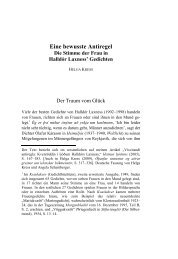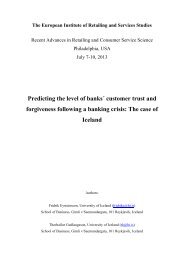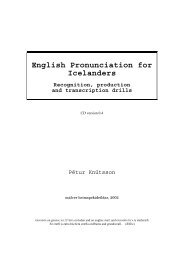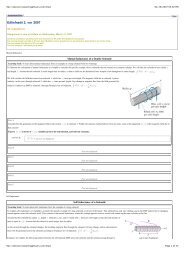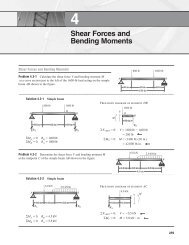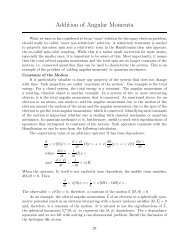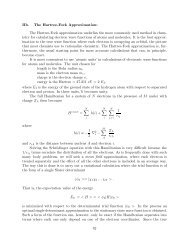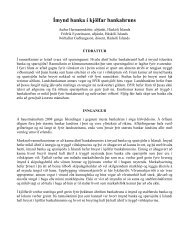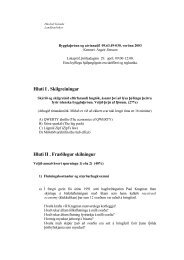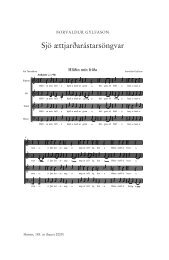Eðlisfræði 2, vor 2007
Eðlisfræði 2, vor 2007
Eðlisfræði 2, vor 2007
You also want an ePaper? Increase the reach of your titles
YUMPU automatically turns print PDFs into web optimized ePapers that Google loves.
http://session.masteringphysics.com/myct<br />
04/19/<strong>2007</strong> 05:02 PM<br />
Express your answer in terms of , , and . You may or may not need all these variables. Use the notation exp(x) for .<br />
ANSWER: =<br />
Part J<br />
Just as in the case of R-C circuits, the steady state here is never actually reached: The exponential functions approach their limits asymptotically as<br />
long for the value of to get very close to its presumed limiting value. The next several questions illustrate this point.<br />
. However, it usually does not take very<br />
Note that the quantity has dimensions of time and is called the time constant (you may recall similar terminology applied to R-C circuits). The time constant is often denoted by . Using ,<br />
one can write the expression<br />
as<br />
.<br />
Find the ratio of the current at time to the maximum current .<br />
Express your answer numerically, using three significant figures.<br />
ANSWER:<br />
= 0.998<br />
Part K<br />
Find the time it takes the current to reach 99.999% of its maximum value.<br />
Express your answer numerically, in units of . Use three significant figures.<br />
ANSWER: = 11.5<br />
Part L<br />
Find the time it takes the current to reach 99.999% of its maximum value. Assume that ohms and millihenrys.<br />
Express your answer in seconds, using three significant figures.<br />
ANSWER: = 5.76×10 −2 seconds<br />
It does not take long at all! However, the situation can be different if the inductance is large and the resistance is small. The next example illustrates this point.<br />
Part M<br />
Find the time it takes the current to reach 99.999% of its maximum value. Assume that ohms and henrys.<br />
Express your answer in seconds, using three significant figures.<br />
ANSWER: = 5760 seconds<br />
This is more than an hour and a half! Nobody would wait that long. Let us see what change would occur in such a circuit over a shorter period of time.<br />
Part N<br />
What fraction of the maximum value will be reached by the current one minute after the switch is closed? Again, assume that ohms and henrys.<br />
Use three significant figures in your answer.<br />
ANSWER:<br />
= 0.113<br />
This is only 11.3% of the maximum value of the current!<br />
Now consider a different situation. After switch has been closed for a long time, it is opened; simultaneously, switch is closed, as shown in the figure. This effectively removes the battery<br />
from the circuit.<br />
The questions below refer to the time immediately after switch is opened and switch is closed.<br />
http://session.masteringphysics.com/myct<br />
Page 10 of 15



